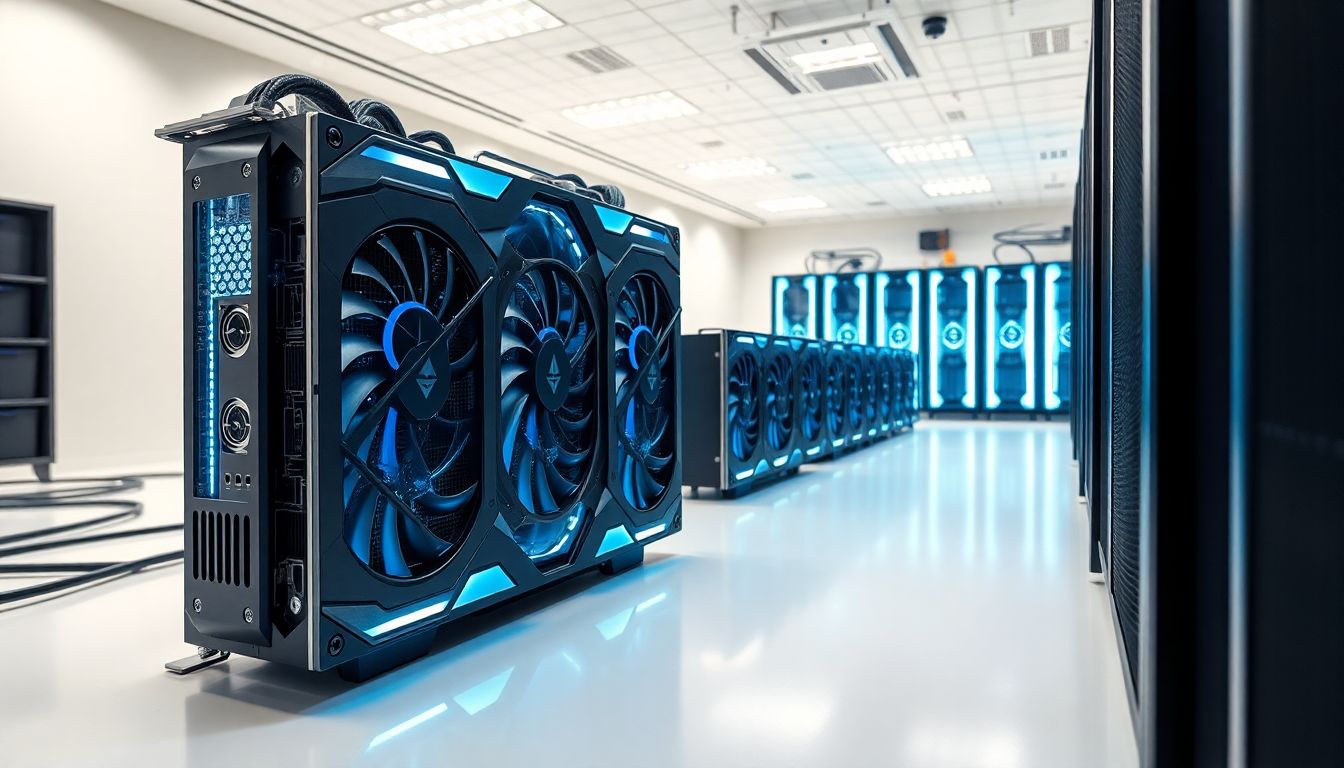Ethereum mining can be highly profitable, but choosing the right GPU is crucial. Let’s explore the best GPUs for Ethereum mining and how to optimize your setup.
Understanding GPU Specifications for Ethereum Mining
Not all GPUs are suitable for Ethereum mining. Key factors like hashrate, memory, and power consumption determine a GPU’s effectiveness.
Hashrate
Hashrate measures how quickly a GPU can solve complex mathematical problems. A higher hashrate means more Ethereum rewards. Check mining websites and forums for hashrate benchmarks.
Memory (VRAM)
Ethereum mining requires a large dataset called the DAG file, which grows over time. A GPU with at least 6-8GB of VRAM is essential for efficient mining.
Power Consumption (TDP)
Power consumption directly impacts profitability. A GPU with a high hashrate but low power consumption is ideal. Calculate profitability by subtracting electricity costs from mining rewards.
Top GPUs for Ethereum Mining in 2024
Here are the top GPUs for Ethereum mining in 2024, categorized by performance and budget.
Top-End Models: RTX 3090, RX 6800 XT
| GPU | Hashrate (MH/s) | Power Consumption (W) |
|---|---|---|
| RTX 3090 | 120 | 300 |
| RX 6800 XT | 64 | 190 |
These GPUs offer high hashrates but consume significant power. They are ideal for serious miners with a higher budget.
Midrange: RTX 3070, RX 6700 XT
Midrange GPUs like the RTX 3070 and RX 6700 XT provide a balance between performance and cost. They are suitable for miners looking for reasonable output without overspending.
Low Budget GPUs: RX 580 and GTX 1660 SUPER
Budget-friendly options like the RX 580 and GTX 1660 SUPER are ideal for beginners or those with limited funds. While they offer lower hashrates, they can still be profitable if acquired at a low cost.
Optimizing GPU Performance for Ethereum Mining
Maximize your mining efficiency with these optimization tips.
Overclocking and Undervolting
Overclocking increases your GPU’s hashrate, while undervolting reduces power consumption. Adjust memory clock speed and core voltage carefully to avoid damaging your GPU.
Mining Software and Set-up
Choose reliable mining software like T-rex Miner or PhoenixMiner. Configure settings to match your GPU’s capabilities for optimal performance.
Cooling Solutions
Overheating can damage your GPU and reduce its lifespan. Invest in aftermarket coolers or liquid cooling to maintain stable temperatures.
Building a Mining Rig for Ethereum
Here’s a step-by-step guide to building your Ethereum mining rig.
Component Selection (Motherboard, PSU, RAM)
Choose a motherboard that supports multiple GPUs, a power supply with sufficient wattage, and at least 8GB of RAM for smooth operation.
Mining OS Setup
Consider using a mining-specific OS like HiveOS for easy management and monitoring of your rig.
Rig Configuration and Monitoring
Configure your rig for optimal performance and monitor temperature, hashrates, and profitability regularly to ensure smooth operation.
The Future of Ethereum Mining and GPU Choices
The Ethereum landscape is evolving. Stay informed about future trends to adapt your mining strategy.
Ethereum 2.0 and Proof of Stake (PoS)
Ethereum’s transition to Proof of Stake (PoS) will eliminate GPU mining for Ethereum. Miners must explore alternative cryptocurrencies.
Other Coins to Mine
Consider mining other cryptocurrencies like Ravencoin, Ergo, or Beam using your GPU setup. Research their profitability and potential ROI.
ROI and Long-Term Investment
Calculate your potential ROI based on your setup and electricity costs. Stay updated on market trends to make informed decisions.
Conclusion
Choosing the best GPU for Ethereum mining requires careful consideration of hashrate, power consumption, and cost. Optimize your setup and stay informed about industry trends to maximize your profits. Even as Ethereum transitions to PoS, GPU mining remains viable for other cryptocurrencies.
